Remaining Useful Life Prediction from 3D Scan Data with Genetically Optimized Convolutional Neural Networks
Abstract
:1. Introduction
2. Related Works
3. Materials and Methods
3.1. Experimental Setup and Data Acquisitions
3.2. D Scan Preprocessing
| Algorithm 1. Point cloud registration | |
| 1. | ;//Reference point cloud |
| 2. | ;//Data point cloud to be registered () |
| 3. | //Tolerance between consecutive iterations |
| 4. | ;//Maximum number of iterations |
| 5. | for |
| 6. | ; //Normalization of |
| 7. | end for |
| 8. | for ; ; |
| 9. | ;//Matching subset (from now ) |
| 10. | for |
| 11. | ; //Normalization of |
| 12. | end for |
| 13. | Calculate the SVD decomposition of the matrix ; |
| 14. | ;//Rotation matrix |
| 15. | ;//Translation matrix |
| 16. | if //Termination condition |
| 17. | break; |
| 18. | end if |
| 19. | end for |
3.3. Evaluation Metrics
3.4. DNN Architectures
3.5. Genetic Optimization
3.6. SVR Based Estimation
4. Results
5. Discussion
6. Conclusions
Author Contributions
Funding
Institutional Review Board Statement
Informed Consent Statement
Data Availability Statement
Acknowledgments
Conflicts of Interest
References
- Atamuradov, V.; Medjaher, K.; Dersin, P.; Lamoureux, B.; Zerhouni, N. Prognostics and Health Management for Maintenance Practitioners—Review, Implementation and Tools Evaluation. Int. J. Progn. Health Manag. 2017, 8. [Google Scholar] [CrossRef]
- Silvestri, L.; Forcina, A.; Introna, V.; Santolamazza, A.; Cesarotti, V. Maintenance transformation through Industry 4.0 technologies: A systematic literature review. Comput. Ind. 2020, 123, 103335. [Google Scholar] [CrossRef]
- Kuo, C.-J.; Chien, C.-F.; Chen, J.-D. Manufacturing Intelligence to Exploit the Value of Production and Tool Data to Reduce Cycle Time. IEEE Trans. Autom. Sci. Eng. 2010, 8, 103–111. [Google Scholar] [CrossRef]
- Chien, C.-F.; Chen, C.-C. Data-Driven Framework for Tool Health Monitoring and Maintenance Strategy for Smart Manufacturing. IEEE Trans. Semicond. Manuf. 2020, 33, 644–652. [Google Scholar] [CrossRef]
- Si, X.-S.; Wang, W.; Hu, C.-H.; Zhou, D.-H. Remaining useful life estimation—A review on the statistical data driven approaches. Eur. J. Oper. Res. 2011, 213, 1–14. [Google Scholar] [CrossRef]
- Liao, L.; Köttig, F. A hybrid framework combining data-driven and model-based methods for system remaining useful life prediction. Appl. Soft Comput. 2016, 44, 191–199. [Google Scholar] [CrossRef]
- Wang, Y.; Zhao, Y.; Addepalli, S.N.P. Remaining Useful Life Prediction using Deep Learning Approaches: A Review. Procedia Manuf. 2020, 49, 81–88. [Google Scholar] [CrossRef]
- Elattar, H.M.; Elminir, H.K.; Riad, A.M. Prognostics: A literature review. Complex Intell. Syst. 2016, 2, 125–154. [Google Scholar] [CrossRef] [Green Version]
- Tran, V.T.; Pham, H.T.; Yang, B.-S.; Nguyen, T.T. Machine performance degradation assessment and remaining useful life prediction using proportional hazard model and support vector machine. Mech. Syst. Signal Process. 2012, 32, 320–330. [Google Scholar] [CrossRef] [Green Version]
- Bengio, Y.; Courville, A.; Vincent, P. Representation Learning: A Review and New Perspectives. IEEE Trans. Pattern Anal. Mach. Intell. 2013, 35, 1798–1828. [Google Scholar] [CrossRef]
- Zhao, R.; Yan, R.; Chen, Z.; Mao, K.; Wang, P.; Gao, R.X. Deep learning and its applications to machine health monitoring. Mech. Syst. Signal Process. 2019, 115, 213–237. [Google Scholar] [CrossRef]
- Shrestha, A.; Mahmood, A. Review of Deep Learning Algorithms and Architectures. IEEE Access 2019, 7, 53040–53065. [Google Scholar] [CrossRef]
- Pearson, K. On lines and planes of closest fit to systems of points in space. Philos. Mag. Ser. 1901, 2, 559–57223. [Google Scholar] [CrossRef] [Green Version]
- Hotelling, H. Analysis of a complex of statistical vari-ables into principal components. J. Educ. Psychol. 1933, 24, 417–441. [Google Scholar] [CrossRef]
- Fisher, R.A. The Use of Multiple Measurements in Taxonomic Problems. Ann. Eugen. 1936, 7, 179–188. [Google Scholar] [CrossRef]
- Hinton, G.E.; Salakhutdinov, R.R. Reducing the dimensionality of data with neural networks. Science 2006, 313, 504–507. [Google Scholar] [CrossRef] [PubMed] [Green Version]
- Ma, J.; Su, H.; Zhao, W.-L.; Liu, B. Predicting the Remaining Useful Life of an Aircraft Engine Using a Stacked Sparse Autoencoder with Multilayer Self-Learning. Complexity 2018, 2018. [Google Scholar] [CrossRef] [Green Version]
- Sun, C.; Ma, M.; Zhao, Z.; Tian, S.; Yan, R.; Chen, X. Deep transfer learning based on sparse autoencoder for re-maining useful life prediction of tool in manufacturing. IEEE Trans. Ind. Inform. 2018, 15, 2416–2425. [Google Scholar] [CrossRef]
- Ren, L.; Sun, Y.; Cui, J.; Zhang, L. Bearing remaining useful life prediction based on deep autoencoder and deep neural networks. J. Manuf. Syst. 2018, 48, 71–77. [Google Scholar] [CrossRef]
- Liao, L.; Jin, W.; Pavel, R. Enhanced Restricted Boltzmann Machine With Prognosability Regularization for Prognostics and Health Assessment. IEEE Trans. Ind. Electron. 2016, 63, 7076–7083. [Google Scholar] [CrossRef]
- Haris, M.; Hasan, M.N.; Qin, S. Early and robust remaining useful life prediction of supercapacitors using BOHB optimized Deep Belief Network. Appl. Energy 2021, 286, 116541. [Google Scholar] [CrossRef]
- Jiao, R.; Peng, K.; Dong, J.; Zhang, C. Fault monitoring and remaining useful life prediction framework for multiple fault modes in prognostics. Reliab. Eng. Syst. Saf. 2020, 203, 107028. [Google Scholar] [CrossRef]
- Ma, M.; Sun, C.; Chen, X. Discriminative deep belief networks with ant colony optimization for health status as-sessment of machine. IEEE Trans. Instrum. Meas. 2017, 66, 3115–3125. [Google Scholar] [CrossRef]
- Zhang, C.; Lim, P.; Qin, A.K.; Tan, K.C. Multiobjective Deep Belief Networks Ensemble for Remaining Useful Life Estimation in Prognostics. IEEE Trans. Neural Netw. Learn. Syst. 2016, 28, 2306–2318. [Google Scholar] [CrossRef] [PubMed]
- Frederick, D.K.; DeCastro, J.A.; Litt, J.S. User’s Guide for the Commercial Modular Aero-Propulsion System Simulation (C-MAPSS. 2007. Available online: https://core.ac.uk/download/pdf/10566552.pdf (accessed on 27 July 2021).
- LeCun, Y.; Bottou, L.; Bengio, Y.; Haffner, P. Gradient-based learning applied to document recognition. Proc. IEEE 1998, 86, 2278–2324. [Google Scholar] [CrossRef] [Green Version]
- Dhillon, A.; Verma, G.K. Convolutional neural network: A review of models, methodologies and applications to object detection. Prog. Artif. Intell. 2020, 9, 85–112. [Google Scholar] [CrossRef]
- Babu, G.S.; Zhao, P.; Li, X.-L. Deep Convolutional Neural Network Based Regression Approach for Estimation of Remaining Useful Life. In International Conference on Database Systems for Advanced Applications; Springer: Berlin/Heidelberg, Germany, 2016; pp. 214–228. [Google Scholar]
- Nectoux, P.; Gouriveau, R.; Medjaher, K.; Ramasso, E.; Chebel-Morello, B.; Zerhouni, N.; Varnier, C. PRONOSTIA: An experimental platform for bearings accelerated degradation tests. In Proceedings of the IEEE International Conference on Prognostics and Health Management, Denver, CO, USA, 18–21 June 2012; pp. 1–8. [Google Scholar]
- Heimes, F.O. Recurrent neural networks for remaining useful life estimation. In Proceedings of the 2008 International Conference on Prognostics and Health Management, Denver, CO, USA, 6–9 October 2008; pp. 1–6. [Google Scholar]
- Zheng, S.; Ristovski, K.; Farahat, A.; Gupta, C. Long Short-Term Memory Network for Remaining Useful Life estimation. In Proceedings of the 2017 IEEE International Conference on Prognostics and Health Management (ICPHM), Piscataway, NJ, USA, 19–21 June 2017; pp. 88–95. [Google Scholar]
- Li, X.; Ding, Q.; Sun, J.-Q. Remaining useful life estimation in prognostics using deep convolution neural networks. Reliab. Eng. Syst. Saf. 2018, 172, 1–11. [Google Scholar] [CrossRef] [Green Version]
- Malhotra, P.; TV, V.; Ramakrishnan, A.; Anand, G.; Vig, L.; Agarwal, P.; Shroff, G. Multi-sensor prognostics using an unsupervised health index based on LSTM encoder-decoder. arXiv 2016, arXiv:1608.06154. [Google Scholar]
- Wu, X.; Liu, Y.; Zhou, X.; Mou, A. Automatic Identification of Tool Wear Based on Convolutional Neural Network in Face Milling Process. Sensors 2019, 19, 3817. [Google Scholar] [CrossRef] [PubMed] [Green Version]
- Marei, M.; El Zaatari, S.; Li, W. Transfer learning enabled convolutional neural networks for estimating health state of cutting tools. Robot. Comput. Manuf. 2021, 71, 102145. [Google Scholar] [CrossRef]
- Deng, J.; Dong, W.; Socher, R.; Li, L.J.; Li, K.; Li, F.F. Imagenet: A Large-Scale Hierarchical Image Database. In Proceedings of the 2009 IEEE Conference on Computer Vision and Pattern Recognition, Miami, FL, USA, 20–25 June 2009; pp. 248–255. [Google Scholar]
- Russakovsky, O.; Deng, J.; Su, H.; Krause, J.; Satheesh, S.; Ma, S.; Fei-Fei, L. Imagenet large scale visual recognition challenge. Int. J. Comput. Vis. 2015, 115, 211–252. [Google Scholar] [CrossRef] [Green Version]
- Krizhevsky, A.; Nair, V.; Hinton, G. Cifar-10 and Cifar-100 Datasets. 2009. Available online: https://www.cs.toronto.edu/~kriz/cifar.html (accessed on 30 June 2021).
- Mo, H.; Custode, L.L.; Iacca, G. Evolutionary neural architecture search for remaining useful life prediction. Appl. Soft Comput. 2021, 108, 107474. [Google Scholar] [CrossRef]
- Li, X.; Jia, X.; Wang, Y.; Yang, S.; Zhao, H.; Lee, J. Industrial Remaining Useful Life Prediction by Partial Observation Using Deep Learning with Supervised Attention. IEEE/ASME Trans. Mechatron. 2020, 25, 2241–2251. [Google Scholar] [CrossRef]
- LMI Technologies. Gocator 3210 Datasheet—Large Field of View 3D Snapshot Sensor. Available online: https://lmi3d.com/resource/gocator-3210-datasheet-large-field-view-3d-snapshot-sensor/ (accessed on 14 July 2021).
- Besl, P.J.; McKay, N.D. A method for registration of 3-D shapes. IEEE Trans. Pattern Anal. Mach. Intell. 1992, 14, 239–256. [Google Scholar] [CrossRef]
- Chen, Y.; Medioni, G. Object modelling by registration of multiple range images. Image Vis. Comput. 1992, 10, 145–155. [Google Scholar] [CrossRef]
- Rousseeuw, P.J.; Leroy, A.M. Robust Regression and Outlier Detection; John Wiley & Sons: Hoboken, NJ, USA, 1987; Volume 589. [Google Scholar]
- Hoppe, H.; Derose, T.; Duchamp, T.; McDonald, J.; Stuetzle, W. Surface reconstruction from unorganized points. ACM SIGGRAPH Comput. Graph. 1992, 26, 71–78. [Google Scholar] [CrossRef]
- LeCun, Y.; Bengio, Y. Convolutional networks for images, speech, and time series. In The Handbook of Brain Theory and Neural Networks; MIT Press: Cambridge, MA, USA, 1995; p. 3361. [Google Scholar]
- Srivastava, N.; Hinton, G.; Krizhevsky, A.; Sutskever, I.; Salakhutdinov, R. Dropout: A Simple Way to Prevent Neural Networks from Overfitting. J. Mach. Learn. Res. 2014, 15, 1929–1958. [Google Scholar]
- Zinkevich, M.; Weimer, M.; Smola, A.J.; Li, L. Parallelized stochastic gradient descent. NIPS 2010, 4, 4. [Google Scholar]
- Ribani, R.; Marengoni, M. A Survey of Transfer Learning for Convolutional Neural Networks. In Proceedings of the 2019 32nd IEEE Conference on Graphics, Patterns and Images Tutorials (SIBGRAPI-T), Rio de Janeiro, Brazil, 28–31 October 2019; pp. 47–57. [Google Scholar]
- Iandola, F.N.; Han, S.; Moskewicz, M.W.; Ashraf, K.; Dally, W.J.; Keutzer, K. SqueezeNet: AlexNet-level accuracy with 50× fewer parameters and <0.5 MB model size. arXiv 2016, arXiv:1602.07360. [Google Scholar]
- Szegedy, C.; Liu, W.; Jia, Y.; Sermanet, P.; Reed, S.; Anguelov, D.; Erhan, D.; Vanhoucke, V.; Rabinovich, A. Going Deeper with Convolutions. arXiv 2014, arXiv:1409.4842. [Google Scholar]
- Szegedy, C.; Vanhoucke, V.; Ioe, S.; Shlens, J.; Wojna, Z. Rethinking the Inception Architecture for Computer Vision. In Pro-ceedings of the IEEE Conference on Computer Vision and Pattern Recognition. Las Vegas, NV, USA, 27–30 June 2016; pp. 2818–2826. [Google Scholar]
- Huang, G.; Liu, Z.; Van Der Maaten, L.; Weinberger, K.Q. Densely Connected Convolutional Networks. In Proceedings of the IEEE Conference on Computer Vision and Pattern Recognition 2017, Honolulu, HI, USA, 21–21 July 2017; pp. 4700–4708. [Google Scholar]
- Sandler, M.; Howard, A.; Zhu, M.; Zhmoginov, A.; Chen, L.C. Mobilenetv2: Inverted residuals and linear bottle-necks. In Proceedings of the IEEE Conference on Computer Vision and Pattern Recognition, Salt Lake City, UT, USA, 18–23 June 2018; pp. 4510–4520. [Google Scholar]
- He, K.M.; Zhang, X.Y.; Ren, S.Q.; Sun, J. Deep Residual Learning for Image Recognition. In Proceedings of the IEEE Conference on Computer Vision and Pattern Recognition, Las Vegas, NV, USA, 27–30 June 2016; pp. 770–778. [Google Scholar]
- Chollet, F. Xception: Deep Learning with Depthwise Separable Convolutions. In Proceedings of the IEEE Conference on Computer Vision and Pattern Recognition (CVPR), Honolulu, HI, USA, 21–26 July 2017; IEEE: New York, NY, USA, 2017; pp. 1251–1258. [Google Scholar]
- Szegedy, C.; Ioffe, S.; Vanhoucke, V.; Alemi, A.A. Inception-v4, inception-resnet and the impact of residual connections on learning. In Proceedings of the 31st AAAI Conference on Artificial Intelligence, San Francisco, CA, USA, 4–9 February 2017. [Google Scholar]
- Zhang, X.; Zhou, X.; Lin, M.; Sun, J. ShuffleNet: An Extremely Efficient Convolutional Neural Network for Mobile Devices. In Proceedings of the 2018 IEEE/CVF Conference on Computer Vision and Pattern Recognition, Salt Lake City, UT, USA, 18–23 June 2018; pp. 6848–6856. [Google Scholar]
- Zoph, B.; Vasudevan, V.; Shlens, J.; Le, Q.V. Learning Transferable Architectures for Scalable Image Recognition. In Proceedings of the 2018 IEEE/CVF Conference on Computer Vision and Pattern Recognition, Salt Lake City, UT, USA, 18–23 June 2018; pp. 8697–8710. [Google Scholar]
- Redmon, J. Darknet: Open-Source Neural Networks in c. 2013. Available online: https://pjreddie.com/darknet/ (accessed on 23 July 2021).
- Tan, M.; Le, Q. EfficientNet: Rethinking Model Scaling for Convolutional Neural Networks. In Proceedings of the International Conference on Machine Learning, Long Beach, CA, USA, 9–15 June 2019; pp. 6105–6114. [Google Scholar]
- Krizhevsky, A.; Sutskever, I.; Hinton, G.E. ImageNet classification with deep convolutional neural networks. Adv. Neural Inf. Process. 2012, 25, 1097–1105. [Google Scholar] [CrossRef]
- Simonyan, K.; Zisserman, A. Very deep convolutional networks for large-scale image recognition. arXiv 2014, arXiv:1409.1556. [Google Scholar]
- Mitchell, M. An Introduction to Genetic Algorithms; MIT Press: Cambridge, MA, USA, 1998. [Google Scholar]
- Darwin, C. On the Origin of Species by Means of Natural Selection; J. Murray: London, UK, 1859. [Google Scholar]
- Beale, M.; Hagan, M.; Demuth, H. Deep Learning Toolbox™ Reference. MATLAB (r) R2021a. The MathWorks, Inc. 2021. Available online: https://it.mathworks.com/help/pdf_doc/deeplearning/nnet_ref.pdf (accessed on 27 July 2021).
- Optimization Toolbox™ User’s Guide. MATLAB (r) R2021a. The MathWorks, Inc. Available online: https://it.mathworks.com/help/pdf_doc/optim/optim.pdf (accessed on 27 July 2021).
- Cao, L.; Chua, K.; Chong, W.; Lee, H.; Gu, Q. A comparison of PCA, KPCA and ICA for dimensionality reduction in support vector machine. Neurocomputing 2003, 55, 321–336. [Google Scholar] [CrossRef]
- Sain, S.R.; Vapnik, V.N. The Nature of Statistical Learning Theory. Technometrics 1996, 38, 409. [Google Scholar] [CrossRef]
- Smola, A.J.; Schölkopf, B. A tutorial on support vector regression. Stat. Comput. 2004, 14, 199–222. [Google Scholar] [CrossRef] [Green Version]
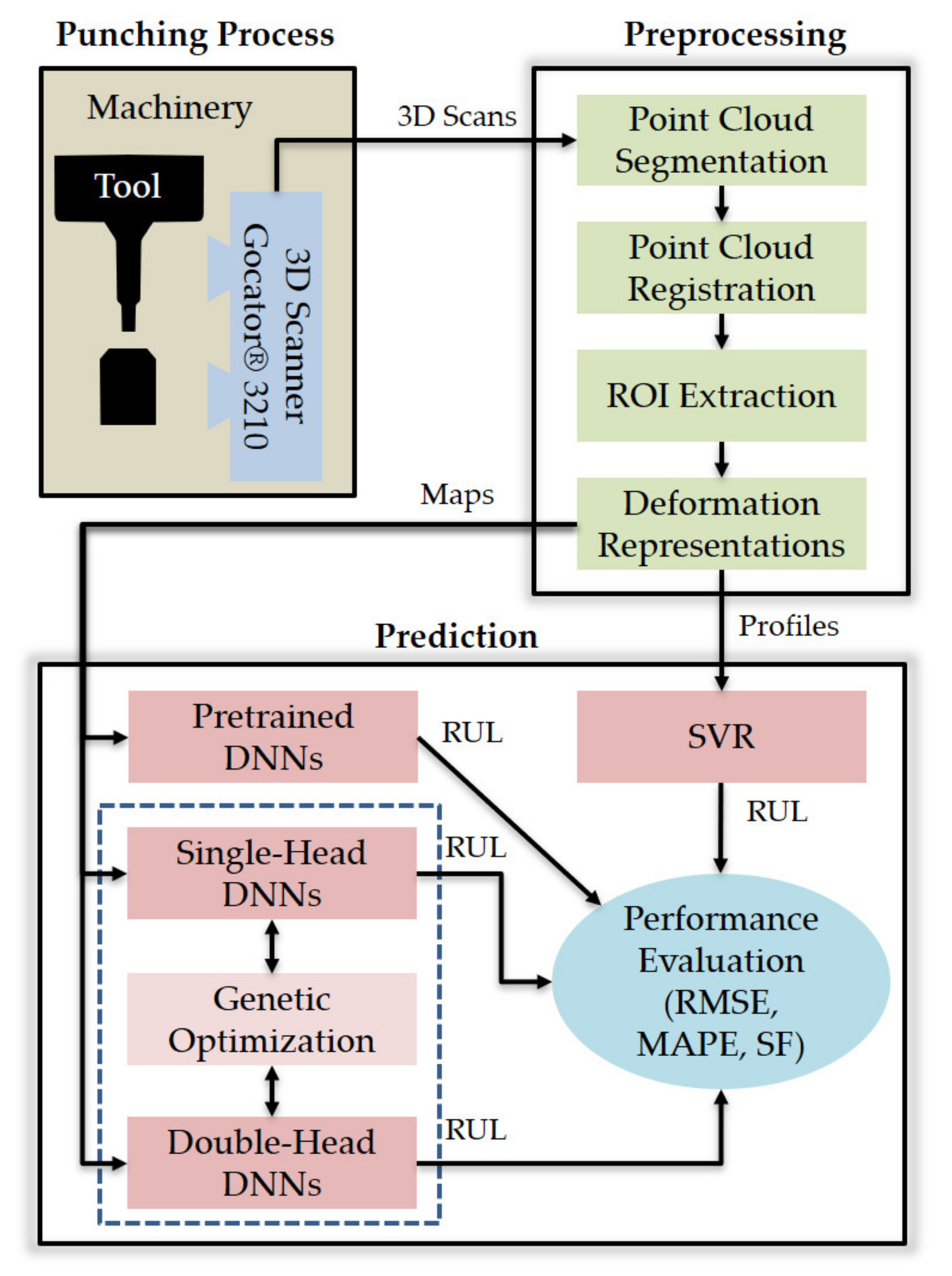
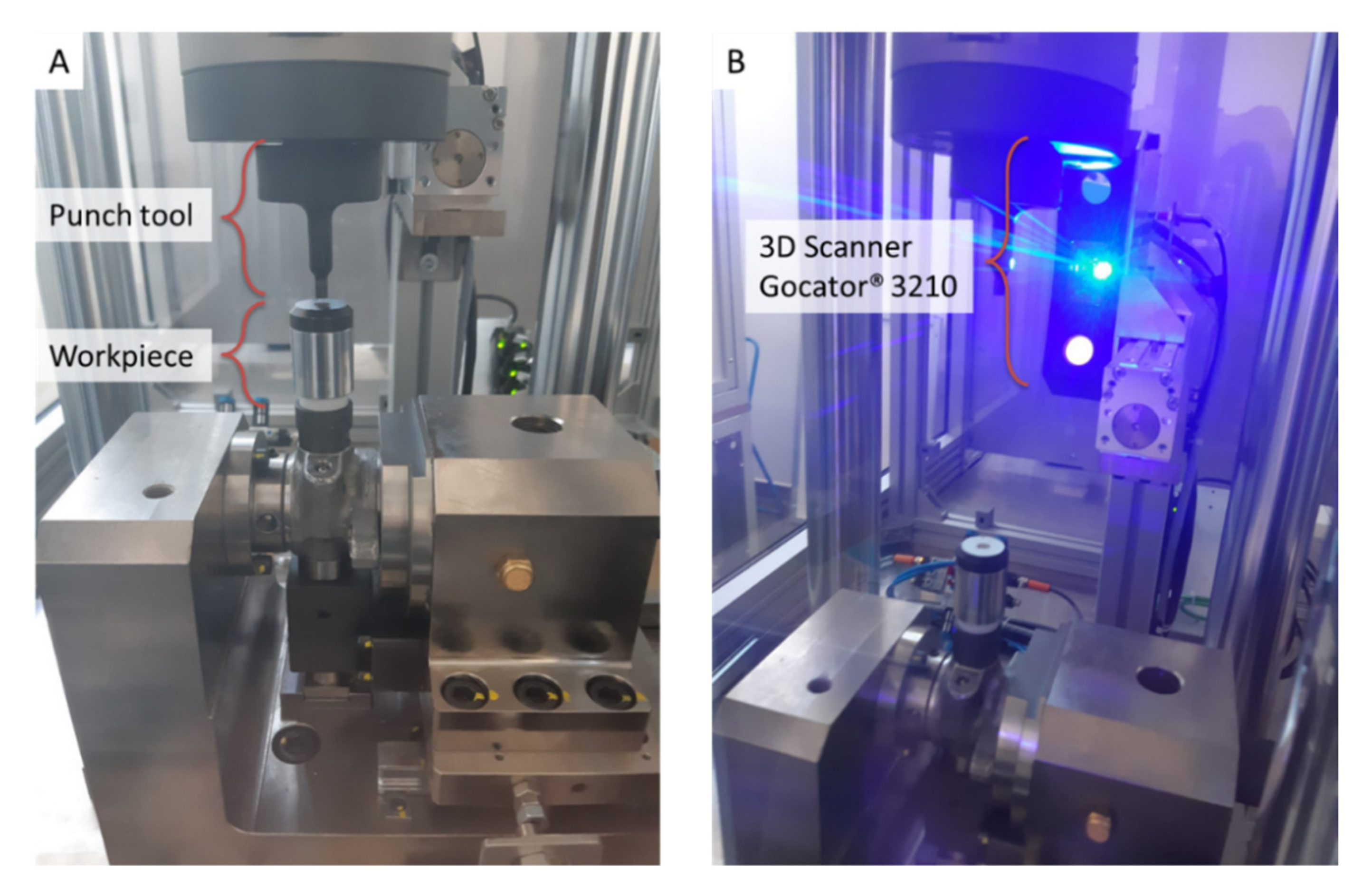
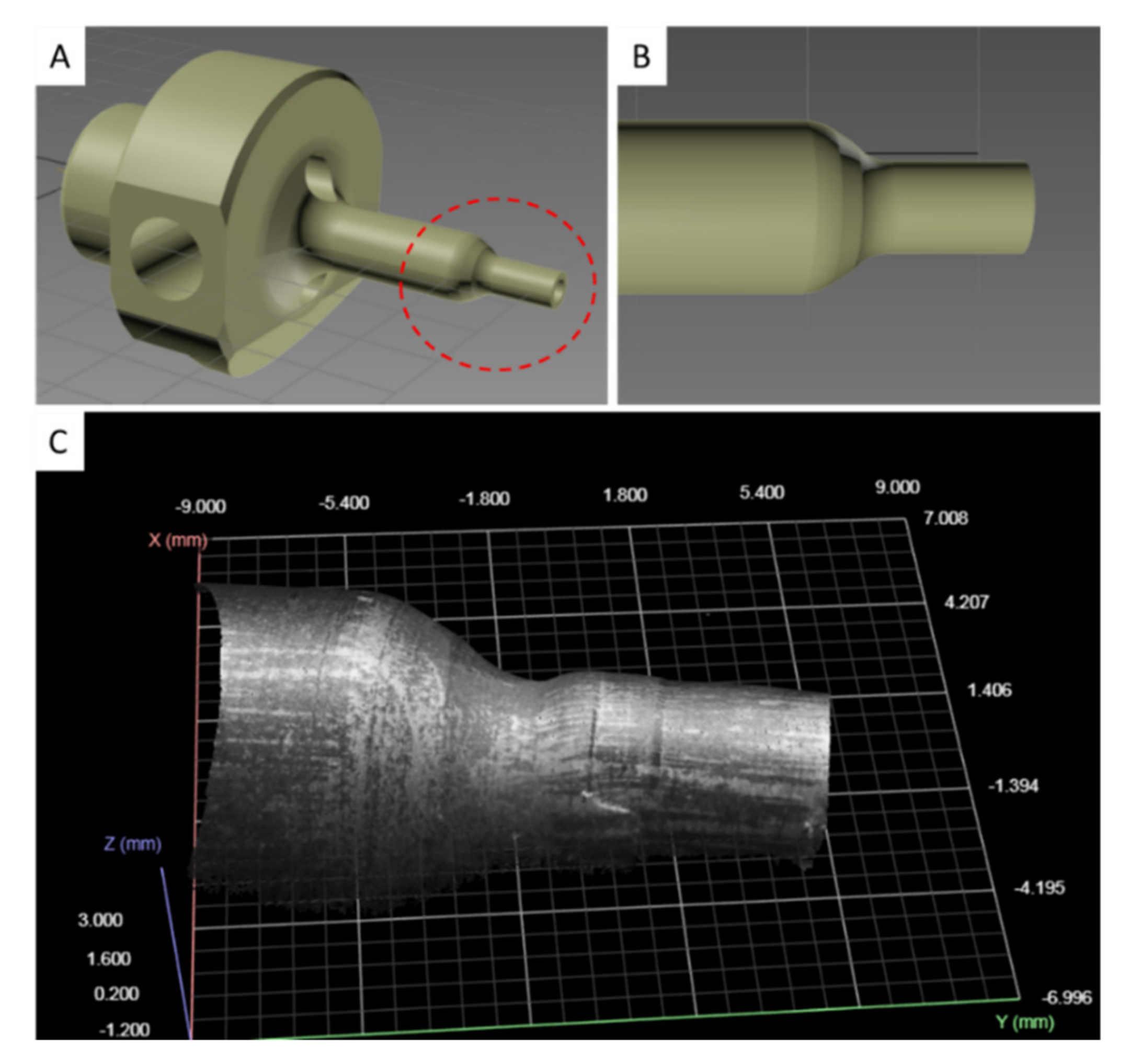



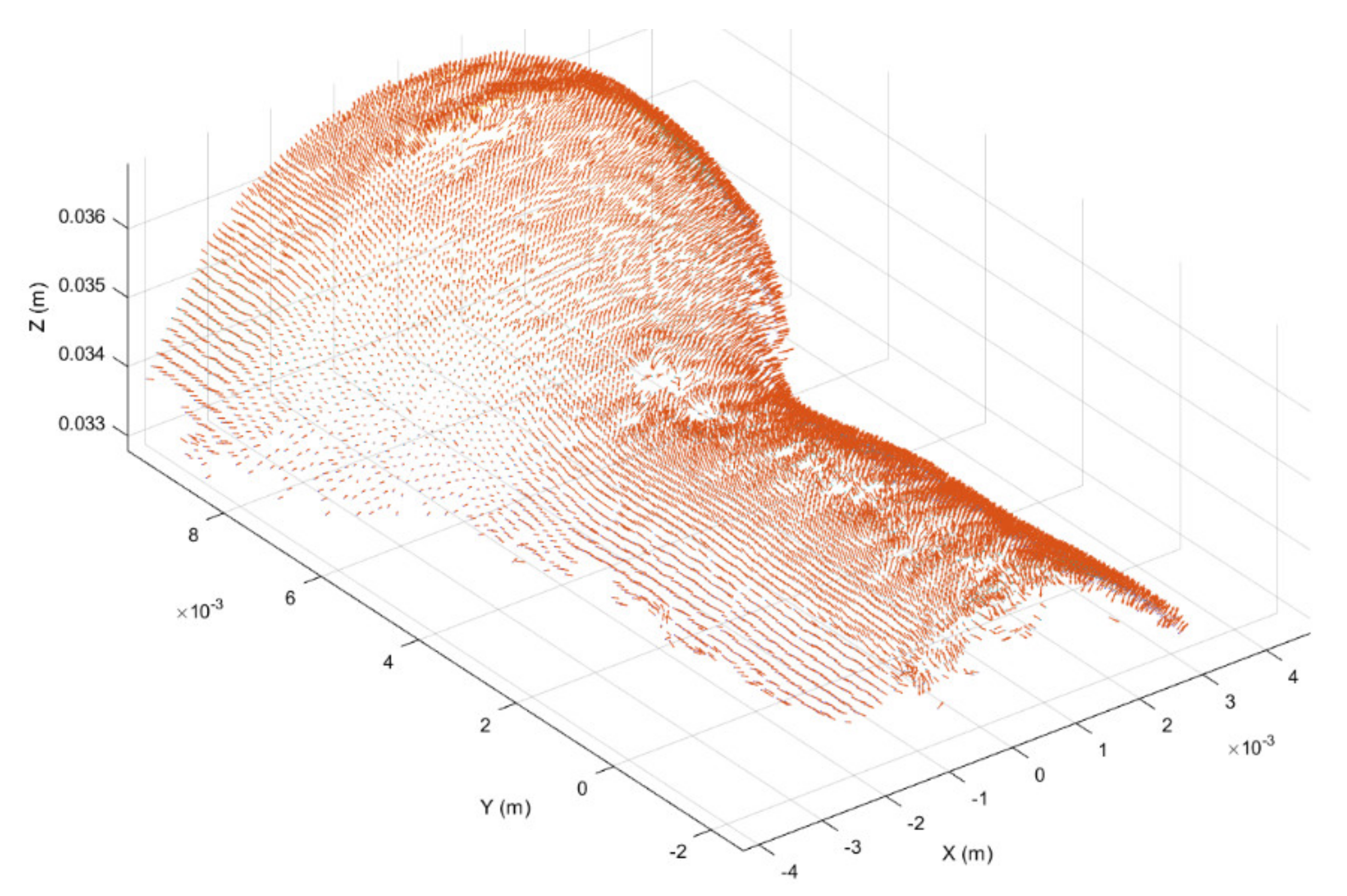


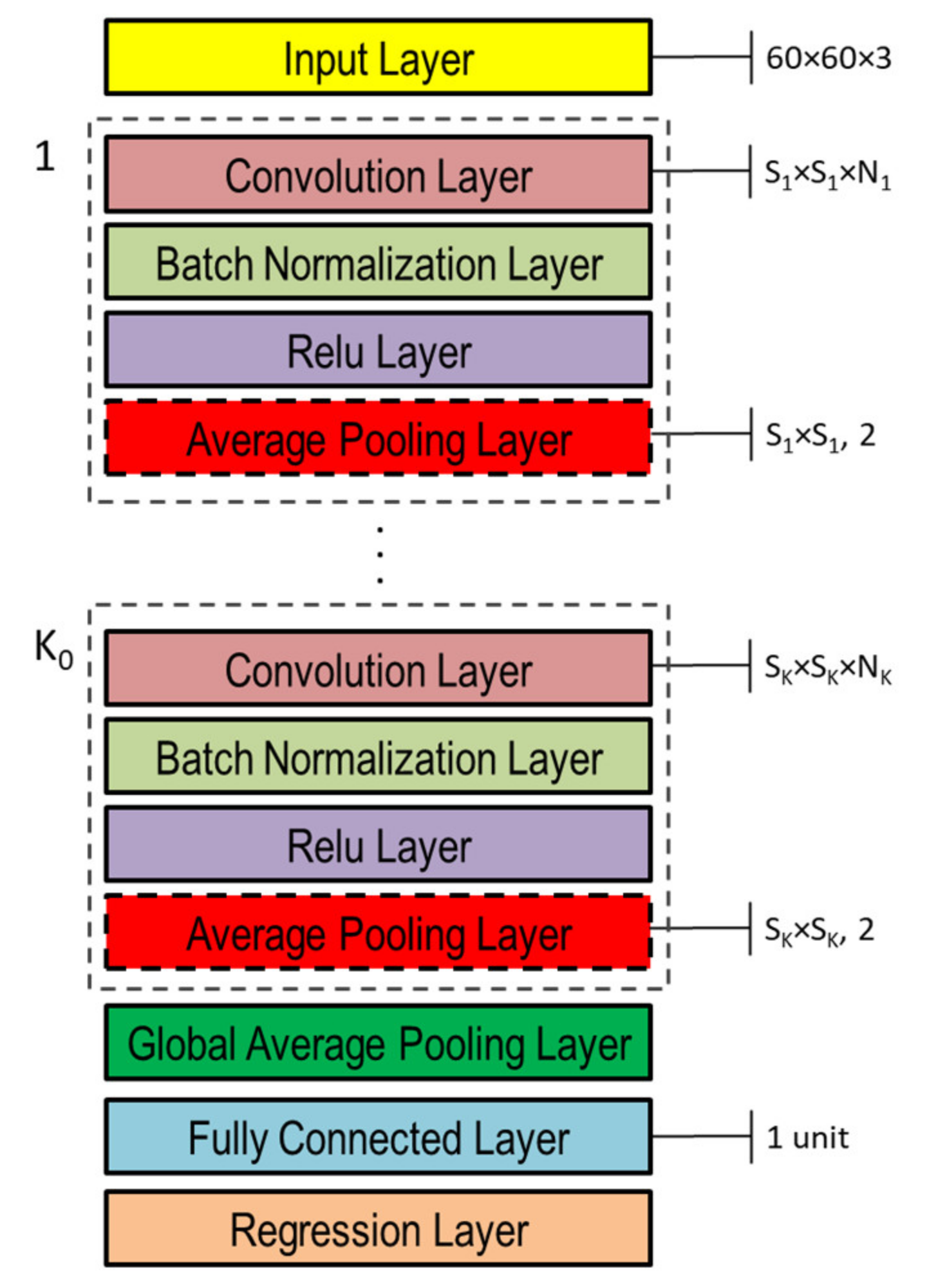


| Network | Input Size | |
|---|---|---|
| Squeezenet [50] | 227 × 227 × 3 | 1.2 |
| Googlenet [51] | 224 × 224 × 3 | 7.0 |
| Inceptionv3 [52] | 299 × 299 × 3 | 23.9 |
| Densenet201 [53] | 224 × 224 × 3 | 20.0 |
| Mobilenetv2 [54] | 224 × 224 × 3 | 3.5 |
| Resnet18 [55] | 224 × 224 × 3 | 11.7 |
| Resnet50 [55] | 224 × 224 × 3 | 25.6 |
| Resnet101 [55] | 224 × 224 × 3 | 44.6 |
| Xception [56] | 299 × 299 × 3 | 22.9 |
| Inceptionresnetv2 [57] | 299 × 299 × 3 | 55.9 |
| Shufflenet [58] | 224 × 224 × 3 | 1.4 |
| Nasnetmobile [59] | 224 × 224 × 3 | 5.3 |
| Nasnetlarge [59] | 331 × 331 × 3 | 88.9 |
| Darknet19 [60] | 256 × 256 × 3 | 20.8 |
| Darknet53 [60] | 256 × 256 × 3 | 41.6 |
| Efficientnetb0 [61] | 224 × 224 × 3 | 5.3 |
| Alexnet [62] | 227 × 227 × 3 | 61.0 |
| Vgg16 [63] | 224 × 224 × 3 | 138.0 |
| Vgg19 [63] | 224 × 224 × 3 | 144.0 |
| Variable | Lower Bound | Upper Bound | |
|---|---|---|---|
| Filter size | 4 | 1 | 2002 |
| “ | 5 | 1 | 4004 |
| “ | 6 | 1 | 6006 |
| Number of filters | 4 | 1 | 35 |
| “ | 5 | 1 | 126 |
| “ | 6 | 1 | 462 |
| Pooling positions | 4 | 1 | 16 |
| “ | 5 | 1 | 32 |
| “ | 6 | 1 | 64 |
| Initial learning rate | 4, 5, 6 | ||
| Momentum | 4, 5, 6 | 0 | 1 |
| Dropout probability | 4, 5, 6 | 0 | 1 |
| Kernel | |
|---|---|
| Linear | |
| Gaussian | |
| Polynomial | with |
| Model No. | Model Name | MAPE | RMSE | SF | TT (Sec) |
|---|---|---|---|---|---|
| 1 | go4normal | 0.063 | 0.036 | 0.301 | 63.793 |
| 2 | go5normal | 0.065 | 0.037 | 0.313 | 18.351 |
| 3 | go6normal | 0.083 | 0.035 | 0.282 | 16.928 |
| 4 | go4depth | 0.102 | 0.063 | 0.513 | 13.647 |
| 5 | go5depth | 0.083 | 0.049 | 0.393 | 18.603 |
| 6 | go6depth | 0.058 | 0.036 | 0.312 | 13.410 |
| 7 | go4+4 | 0.097 | 0.039 | 0.349 | 31.233 |
| 8 | go4+5 | 0.141 | 0.057 | 0.493 | 125.250 |
| 9 | go4+6 | 0.154 | 0.064 | 0.569 | 33.631 |
| 10 | go5+4 | 0.123 | 0.048 | 0.427 | 96.948 |
| 11 | go5+5 | 0.162 | 0.062 | 0.545 | 58.817 |
| 12 | go5+6 | 0.129 | 0.053 | 0.469 | 58.204 |
| 13 | go6+4 | 0.158 | 0.067 | 0.593 | 37.651 |
| 14 | go6+5 | 0.237 | 0.082 | 0.762 | 196.594 |
| 15 | go6+6 | 0.251 | 0.085 | 0.812 | 35.540 |
| Model No. | Model Name | MAPE | RMSE | SF | FTT (Sec) |
|---|---|---|---|---|---|
| 16 | squeezenet | 2.080 | 0.363 | 4.044 | 32.875 |
| 17 | googlenet | 0.452 | 0.112 | 1.077 | 18.947 |
| 18 | inceptionv3 | 3.402 | 0.367 | 3.839 | 121.734 |
| 19 | densenet201 | 1.802 | 0.559 | 5.453 | 758.300 |
| 20 | mobilenetv2 | 2.692 | 0.608 | 6.471 | 94.666 |
| 21 | resnet18 | 3.053 | 0.638 | 6.719 | 48.073 |
| 22 | resnet50 | 1.854 | 0.426 | 4.086 | 140.182 |
| 23 | resnet101 | 1.193 | 0.432 | 4.095 | 270.903 |
| 24 | xception | 1.825 | 0.365 | 1.550 | 833.500 |
| 25 | inceptionresnetv2 | 2.691 | 0.555 | 5.365 | 755.150 |
| 26 | shufflenet | 2.673 | 0.905 | 9.534 | 73.828 |
| 27 | nasnetmobile | 1.597 | 0.412 | 4.276 | 352.860 |
| 28 | darknet19 | 1.623 | 0.340 | 1.332 | 108.202 |
| 29 | darknet53 | 1.384 | 0.485 | 1.870 | 565.150 |
| 30 | efficientnetb0 | 1.408 | 0.338 | 3.306 | 195.668 |
| 31 | alexnet | 1.048 | 0.160 | 1.482 | 37.516 |
| 32 | vgg16 | 0.615 | 0.311 | 1.177 | 310.489 |
| 33 | vgg19 | 0.698 | 0.484 | 1.821 | 405.430 |
| Model No. | Model Name | MAPE | RMSE | SF | FTT (Sec) |
|---|---|---|---|---|---|
| 34 | squeezenet | 3.789 | 0.321 | 3.175 | 36.501 |
| 35 | googlenet | 0.416 | 0.114 | 1.142 | 56.326 |
| 36 | inceptionv3 | 2.200 | 0.312 | 3.067 | 267.350 |
| 37 | densenet201 | 1.657 | 0.527 | 5.387 | 785.250 |
| 38 | mobilenetv2 | 2.108 | 0.452 | 4.768 | 104.493 |
| 39 | resnet18 | 1.602 | 0.448 | 4.576 | 48.366 |
| 40 | resnet50 | 1.181 | 0.312 | 2.963 | 147.724 |
| 41 | resnet101 | 1.838 | 0.633 | 7.828 | 283.090 |
| 42 | xception | 1.790 | 0.409 | 1.725 | 915.500 |
| 43 | inceptionresnetv2 | 1.530 | 0.266 | 2.519 | 745.000 |
| 44 | shufflenet | 2.062 | 0.694 | 7.401 | 74.328 |
| 45 | nasnetmobile | 1.309 | 0.324 | 3.329 | 345.805 |
| 46 | darknet19 | 9.471 | 3.291 | 14.630 | 126.012 |
| 47 | darknet53 | 0.878 | 0.423 | 1.557 | 580.700 |
| 48 | efficientnetb0 | 0.870 | 0.274 | 2.761 | 183.381 |
| 49 | alexnet | 0.822 | 0.311 | 2.921 | 35.722 |
| 50 | vgg16 | 1.095 | 0.616 | 2.476 | 312.283 |
| 51 | vgg19 | 0.648 | 0.452 | 1.683 | 409.718 |
| Model No. | Model Name | MAPE | RMSE | SF | TT (Sec) |
|---|---|---|---|---|---|
| 52 | linear | 1.073 | 0.135 | 1.444 | 4.667 |
| 53 | gaussian | 1.190 | 0.182 | 1.673 | 4.117 |
| 54 | polynomial3 | 1.107 | 0.165 | 1.502 | 5.053 |
| 55 | polynomial4 | 0.909 | 0.124 | 1.180 | 5.726 |
| 56 | polynomial5 | 0.862 | 0.113 | 1.134 | 5.734 |
| 57 | polynomial6 | 0.857 | 0.120 | 1.179 | 5.807 |
| Model No. | Model Name | Network Architecture | |
|---|---|---|---|
| 1 | go4normal | S = (29,25,19,17) | 1.39 |
| N = (32,32,32,32) | |||
| P = (0,0,0,0) | |||
| ILR = 0.0059 | |||
| M = 0.8634 | |||
| 2 | go5normal | S = (5,7,19,23,29) | 4.95 |
| N = (32,32,32,64,64) | |||
| P = (1,0,0,0,0) | |||
| ILR = 0.0068 | |||
| M = 0.8049 | |||
| 3 | go6normal | S = (29,25,23,19,11,7) | 1.72 |
| N = (16,32,32,32,64,64) | |||
| P = (1,1,1,1,0,0) | |||
| ILR = 0.0047 | |||
| M = 0.7572 | |||
| 4 | go4depth | S = (29,23,21,15) | 0.347 |
| N = (16,16,16,16) | |||
| P = (1,1,1,1) | |||
| ILR = 0.0074 | |||
| M = 0.6636 | |||
| 5 | go5depth | S = (29,27,15,11,3) | 1.19 |
| N = (32,32,32,32,32) | |||
| P = (1,1,1,0,0) | |||
| ILR = 0.0054 | |||
| M = 0.6893 | |||
| 6 | go6depth | S = (3,5,15,21,23,27) | 7.93 |
| N = (32,64,64,64,64,64) | |||
| P = (1,0,0,0,0,0) | |||
| ILR = 0.0077 | |||
| M = 0.7702 |
| Model No. | Model Name | Network Architecture | |
|---|---|---|---|
| 7 | go4+4 | S1 = (5,15,21,29), S2 = (29,27,25,17) N1 = (16,16,16,32), N2 = (16,16,16,16) P1 = (1,1,1,1), P2 = (1,1,1,1) d1 = 0.6791, d2 = 0.2646 ILR = 0.0086 M = 0.6499 | 1.06 |
| 8 | go4+5 | S1 = (27,23,19,3), S2 = (29,25,23,13,7) N1 = (32,32,32,32), N2 = (16,64,64,64,64) P1 = (1,0,0,0), P2 = (0,0,0,0,0) d1 = 0.2452, d2 = 0.2494 ILR = 0.0084 M = 0.5046 | 4.73 |
| 9 | go4+6 | S1 = (5,23,27,29), S2 = (27,25,23,17,13,9) N1 = (16,32,32,32), N2 = (16,16,16,32,64,64) P1 = (1,0,0,0), P2 = (0,0,0,0,0,0) d1 = 0.2659, d2 = 0.4718 ILR = 0.0069 M = 0.6599 | 7.76 |
| 10 | go5+4 | S1 = (27,25,23,21,17), S2 = (29,25,11,5) N1 = (16,32,32,32,64), N2 = (32,32,32,32) P1 = (0,0,0,0,0), P2 = (0,0,0,0) d1 = 0.598, d1 = 0.282 ILR = 0.008 M = 0.804 | 2.81 |
| 11 | go5+5 | S1 = (25,21,19,15,7), S2 = (29,21,15,13,3) N1 = (64,64,64,64,64), N2 = (16,32,32,64,64) P1 = (1,1,1,0,0), P2 = (0,0,0,0,0) d1 = 0.1296, d2 = 0.1075 ILR = 0.0089 M = 0.4570 | 5.41 |
| 12 | go5+6 | S1 = (9,11,13,25,27), S2 = (7,11,17,19,21,27) N1 = (16,16,32,64,64), N2 = (16,32,64,64,64,64) P1 = (1,0,0,0,0), P2 = (0,0,0,0,0,0) d1 = 0.425, d1 = 0.355 ILR = 0.006 M = 0.464 | 11.32 |
| 13 | go6+4 | S1 = (5,15,19,21,23,29), S2 = (11,17,19,25) N1 = (16,16,32,32,32,32), N2 = (16,16,32,32) P1 = (1,0,0,0,0,0), P2 = (1,1,0,0) d1 = 0.7385, d2 = 0.5250 ILR = 0.0039 M = 0.1515 | 3.00 |
| 14 | go6+5 | S1 = (29,27,19,17,13,5), S2 = (7,17,21,27,29) N1 = (64,64,64,64,64,64), N2 = (16,32,32,32,32) P1 = (0,0,0,0,0,0), P2 = (1,0,0,0,0) d1 = 0.8581, d2 = 0.5764 ILR = 0.0074 M = 0.5507 | 8.82 |
| 15 | go6+6 | S1 = (3,13,15,21,25,29), S2 = (3,11,13,17,21,25) N1 = (16,16,16,32,64,64), N2 = (16,16,64,64,64,64) P1 = (1,0,0,0,0,0), P2 = (1,0,0,0,0,0) d1 = 0.7867, d2 = 0.6495 ILR = 0.0046 M = 0.6290 | 10.81 |
| Study | Dataset | Degradation | Approach | MAPE | RMSE | TT/FTT |
|---|---|---|---|---|---|---|
| Wu et al. [32] | 8400 camera images | Tool wear | Transfer learning | 0.0476 | - | 2 ÷ 333 h |
| Marei et al. [33] | 327 camera images | Tool wear | Transfer learning | - | 0.1654 | 3358 s |
| Mo et al. [37] | 21 time series (engine sensors) | Turbofan engine | Genetically optimized | - | 11.28 | - |
| Ren et al. [19] | 15 time series (vibration sensor) | Bearing wear | Manually engineered | - | 0.2 | - |
| This study | 2014 scans | Punch tool | Transfer learning | 0.416 | 0.112 | 19 ÷ 916 s |
| This study | 2014 scans | Punch tool | Genetically optimized | 0.058 | 0.035 | 13 ÷ 125 s |
Publisher’s Note: MDPI stays neutral with regard to jurisdictional claims in published maps and institutional affiliations. |
© 2021 by the authors. Licensee MDPI, Basel, Switzerland. This article is an open access article distributed under the terms and conditions of the Creative Commons Attribution (CC BY) license (https://creativecommons.org/licenses/by/4.0/).
Share and Cite
Diraco, G.; Siciliano, P.; Leone, A. Remaining Useful Life Prediction from 3D Scan Data with Genetically Optimized Convolutional Neural Networks. Sensors 2021, 21, 6772. https://doi.org/10.3390/s21206772
Diraco G, Siciliano P, Leone A. Remaining Useful Life Prediction from 3D Scan Data with Genetically Optimized Convolutional Neural Networks. Sensors. 2021; 21(20):6772. https://doi.org/10.3390/s21206772
Chicago/Turabian StyleDiraco, Giovanni, Pietro Siciliano, and Alessandro Leone. 2021. "Remaining Useful Life Prediction from 3D Scan Data with Genetically Optimized Convolutional Neural Networks" Sensors 21, no. 20: 6772. https://doi.org/10.3390/s21206772
APA StyleDiraco, G., Siciliano, P., & Leone, A. (2021). Remaining Useful Life Prediction from 3D Scan Data with Genetically Optimized Convolutional Neural Networks. Sensors, 21(20), 6772. https://doi.org/10.3390/s21206772








